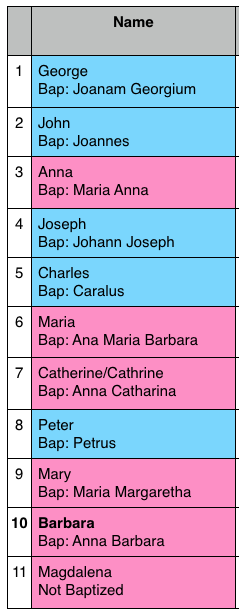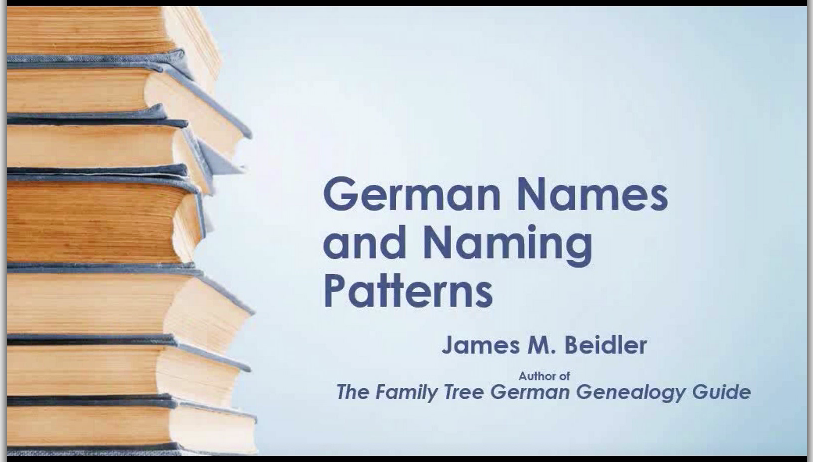I organized it and we had our first Special Interest Group (SIG) for Niagara County Genealogical Society (NCGS) on October 3rd, 2019. It was a book discussion group and the book we discussed was The Family Tree German Genealogy Guide by James M. Beidler.

I underlined many things in this book and I should do another blog on just that, but I wanted to especially write a blog about the part of the book that really spoke to me which was on pages 101 and 102. This is where Jim wrote about German Given Names Traditions and Naming Patterns.
My 3rd great-grandparents Michael Gollwitzer and Margaretha Gleisner were married in Buffalo, NY in 1849 and had eleven children. I have always wondered why so many of them didn’t go by their first names that was listed on their baptism record.

In the book, Jim Beidler explains that the German naming tradition is that children are given two names and that often the second name is the one that they went by. He said that most German boys were given the first name of Johannes or Johann at their baptism and that most German girls were given the first name of Maria, Anna, or Anna Maria.
Of the eleven Gollwitzer children, five of them were boys and three of those five were baptized with a variant of Johann. Of the six girls, two were baptized Maria, two were baptized Anna, and one was baptized Ana Maria. Gosh! The Gollwitzer family sure did match what Jim said that the German naming tradition was!
He explains that the second name (the one that they went by) is called a Rufname (pronounced roof-nom-a) which is a “nickname” and outside of their baptism it is what they used to identify themselves. In the case of the boys listed above with only one given name, that name was their “true” name.
Jim also explains that unlike how in English we often shorten names by using the first part of a name (for example: Christopher becomes Chris), that Germans often shorten the name by dropping the first syllable (for example: Chistophel becomes Stophel). That’s interesting!
I knew that Irish families had naming patterns, but I was unaware that Germans did, too. The book explains the patterns:
- Sons: 1st born father’s father, 2nd born mother’s father, 3rd born father, 4th born uncles.
- Daughters: 1st born father’s mother, 2nd born mother’s mother, 3rd born mother, 4th born aunts.
As soon as I read that I raced to my tree. Though many of the names of the Gollwitzer children are also other family members, they did not seem to follow this naming pattern.

Jim Beidler also did a wonderful webinar on Legacy Family Tree Webinars that was on this same topic. I loved this webinar as he gets to go into more detail on this specific topic and I also get to hear her pronounce the names. Here are my notes from the Given Names portion of the webinar:
- The first name is considered a prefix name
- Maria is pronounced Mariah
- Rufname translates to “call name”
- Sometimes children were given three names and they might go by any of them
- The ‘H’ in Catharina and Margaretha is silent
- Catharina sounds like Katarina
- Margaretha sounds like Margarita
- If a girl was named Anna Maria, she usually used that as a double name
- If two people in the same community had the same name, they may use the first name to help distinguish them from each other
- Usually if it is the first name they use Johann, if it is going to be a “true” John, then the baptism usually says Johannes
- During the 1800s the double-naming continued in America but it started to fade out
- In America, many began using their mother’s maiden name as their middle name around the time of Civil War (this made the Rufname tradition start to go away)
This webinar is a must watch on this topic! You can watch via subscription to Family Tree Webinars here: https://familytreewebinars.com.
